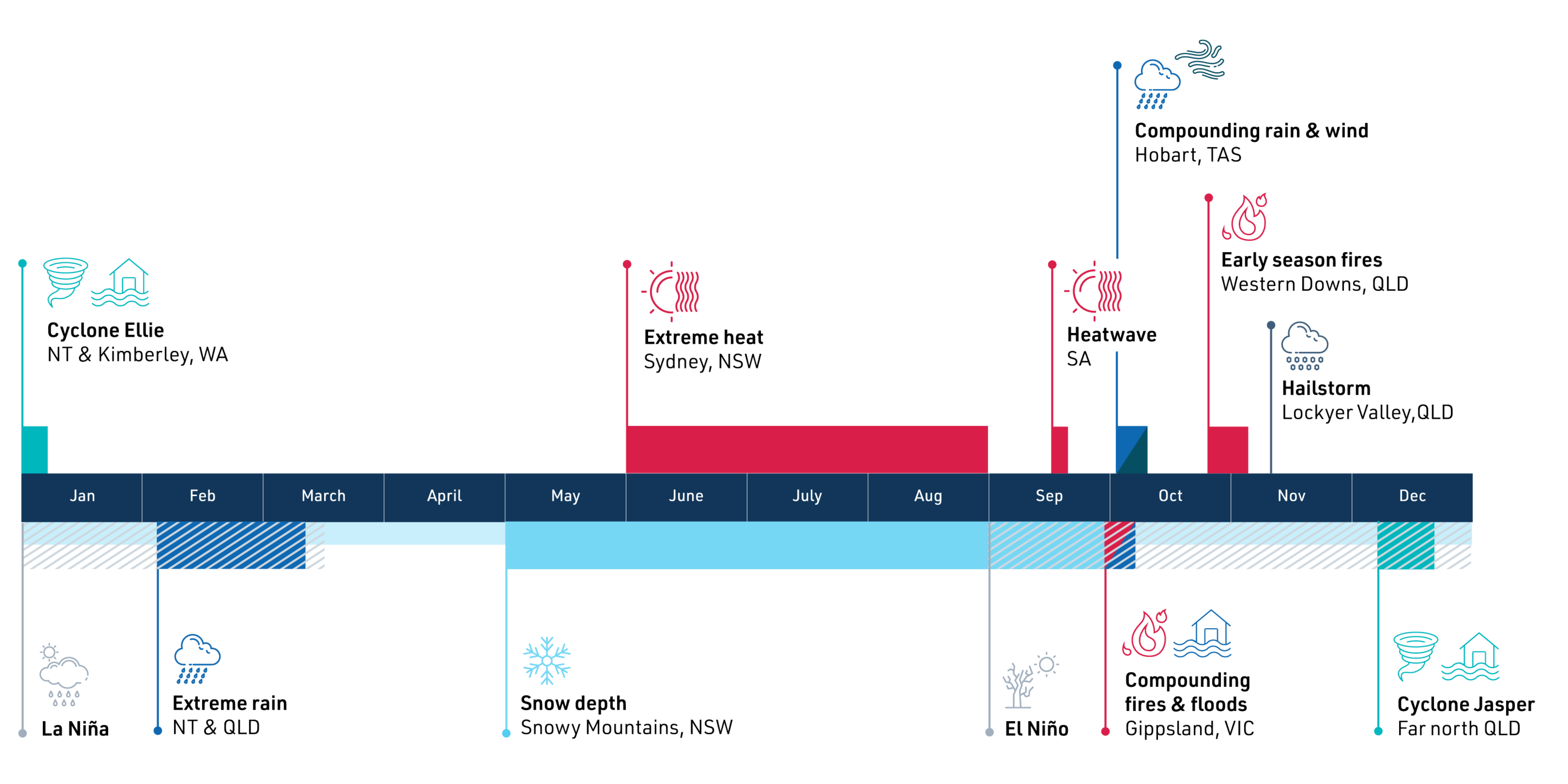Scientists and researchers at the ARC Centre of Excellence for Climate Extremes have today released “The State of Weather and Climate Extremes 2023” report.
The report, co-written by more than 30 of Australia’s leading climate scientists, including many of the Centre’s early career researchers, is designed to help decision makers and the general public understand the complexity of climate extremes.
Professor Andy Pitman, Director of the ARC Centre of Excellence for Climate Extremes, said: “Over the last few years we’ve been pulling extremes together into a narrative that provides a one-stop shop of what happened in the year.”
“It’s about packaging the information up in a digestible form to help people understand what’s going on in our environment.”
The report provides a description of each event and its impacts as well as an explanation which reflects scientists’ understanding of the causes.
“What was unusual about 2023 is how intense some of these events were and how they kept pushing records,” Pitman said.
While it’s challenging to determine the cause of specific extreme events, Pitman said that they seemed to be happening with increased frequency in 2023.
“Some of them were occurring one after the other or close to each other. These temporally and spatially compounding events had a substantial impact on our environment and were difficult for us to deal with.”

The influence of climate drivers such as El Niño and the Indian Ocean Dipole as well as the evolution of rainfall and temperature throughout the year were also assessed in the report.
The year began with above-average rainfall in northern Australia progressing to increasingly dry conditions in southern and eastern Australia in late winter and spring, when El Niño was declared.
Against expectations, above average rainfall was observed in December across much of eastern Australia, particularly in Northern Queensland, where residents were impacted by the intense flooding caused by Cyclone Jasper.
“We can easily get the impression that natural climate drivers such as El Niño are the dominant cause of what we observed in 2023 but that’s not true. El Niño does not guarantee that eastern Australia will be hot and dry, rather it influences the probability of hotter and drier conditions,” Pitman said.

Overall, 2023 was the 8th hottest year on record in Australia, with temperatures 0.98°C above the 1961-1990 average. Winter was the warmest on record since observations began in 1910, and September was the driest ever recorded.
Globally, 2023 marked the hottest year on record and a year of extremes. Canada’s wildfire season in June was unprecedented with 18.4 million hectares burnt, and the heatwaves over Europe contributed to many national and global temperature records tumbling in July. The report provides an overview of some international events that took place in 2023.
“There’s plenty of places around the world where events are becoming hard to survive,” Pitman said.
“What scientists bring to the table is more and more evidence of what we already know. We need to act based upon observations and existing knowledge. The actions are straightforward: stop emitting carbon and invest heavily in adaptation.”
In 2022, The State of Extremes report received more than 3600 views online and was shared by more than 115 media organisations across the country. It was referenced in the Australian Parliament House of Representatives and was circulated amongst the Bureau of Meteorology, the Australian Antarctic Program, CSIRO and the UK Met Office.
